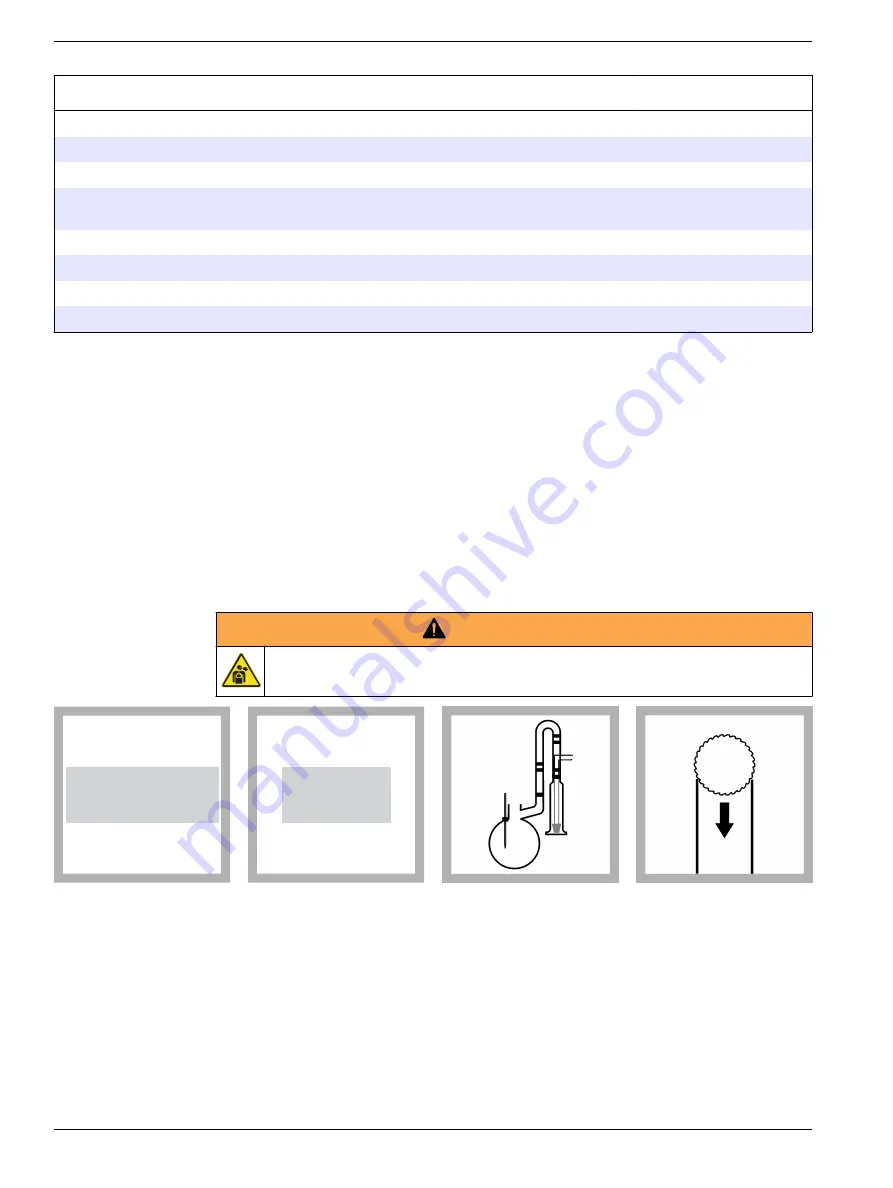
Items to collect (continued)
Description
Quantity
Lead Acetate Solution, 10%
1 mL
Potassium Iodide Solution, 20%
3 mL
Pyridine, ACS
50 mL
Sample cells (For information about sample cells, adapters or light shields, refer to
2
Silver Diethyldithiocarbamate
1 g
Stannous Chloride Solution
1 mL
Water, deionized
varies
Zinc, 20-mesh, ACS
6 g
Consumables and replacement items
on page 6 for order information.
Sample collection and storage
•
Collect samples in clean glass or plastic bottles that have been cleaned with 6 N (1:1)
hydrochloric acid and rinsed with deionized water.
•
To preserve samples for later analysis, adjust the sample pH to less than 2 with
concentrated sulfuric acid (approximately 2 mL per liter). No acid addition is
necessary if the sample is tested immediately.
•
Keep the preserved samples at room temperature for a maximum of 6 months.
•
Before analysis, adjust the pH to approximately 7 with 5 N sodium hydroxide solution.
•
Correct the test result for the dilution caused by the volume additions.
Test procedure
W A R N I N G
Gas inhalation hazard. Operate the instrument in a fume hood to prevent exposure to
hazardous gas.
User Programs
1.
Prepare a calibration and
user program for this
method. Refer to
on page 5.
Record the program
number.
Select User Programs.
Start
2.
Start the user-entered
program from step 1. For
information about sample
cells, adapters or light
shields, refer to
on page 1.
3.
Prepare the distillation
apparatus, refer to the
Distillation Manual
for
assembly instructions.
Do
not connect to the
aspirator.
4.
Soak a cotton ball with
10% Lead Acetate Solution.
Put the cotton ball in the gas
scrubber. Make sure that
the cotton seals against the
glass.
2
Arsenic Silver Diethyldithiocarbamate Method (0.200 mg/L)


























